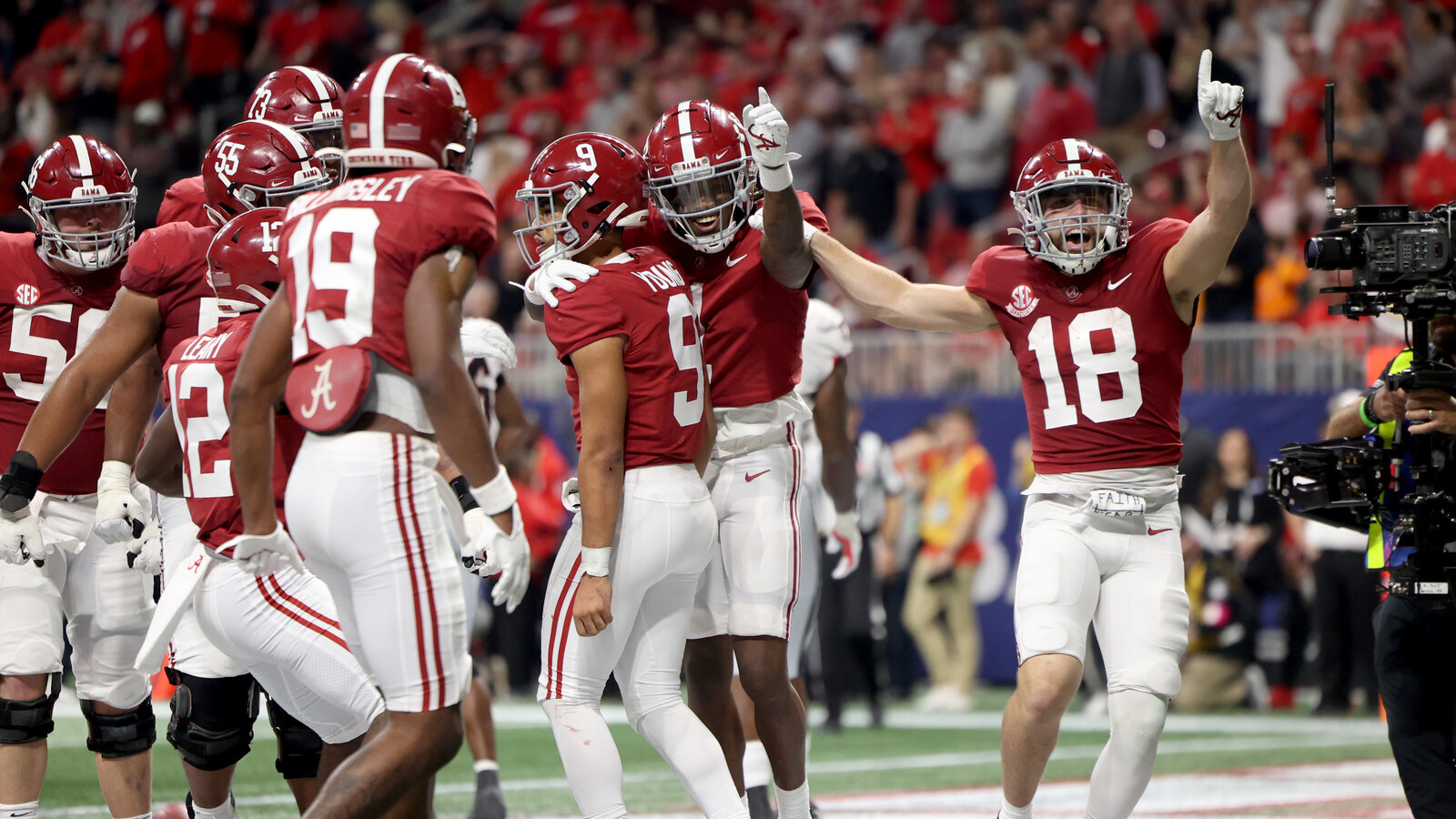Alabama Football’s Playing Time Battle Shifts Focus from Individual Players to Positional Philosophies as 2025 Season Nears
As Alabama football navigates through its 2025 preseason preparations, a fascinating shift in narrative has emerged from the traditionally cutthroat competition for starting roles. Rather than the expected headlines about individual player matchups and depth chart duels, the real battle unfolding in Tuscaloosa is between entire positional philosophies. According to seasoned observers like longtime college football writer and analyst Chase Goodbread, Alabama’s coaching staff is placing a stronger emphasis on evaluating the function of certain personnel groupings and packages—rather than simply choosing one player over another. This evolution in the Tide’s approach to allocating playing time reflects broader trends in modern football, where flexibility, schematics, and situational readiness increasingly dictate who sees the field.
This isn’t to say that Alabama no longer features elite talent battling for jobs. That much is still true across the board. The Crimson Tide roster, stacked with blue-chip recruits and returning stars, is as deep and competitive as ever. However, instead of the spotlight being centered on who wins a 1-vs-1 camp battle at quarterback, cornerback, or wide receiver, the program is now much more focused on determining which units and combinations of players give them the best advantage in specific game situations. It’s a tactical shift—one rooted in football philosophy and necessity rather than just personnel hierarchy.
For example, on offense, the decision of whether to lean more heavily on two-tight end sets versus traditional spread formations will influence who gets playing time more than which individual tight end or slot receiver looks better in camp. It’s not just about the best player—it’s about the best look. If Alabama chooses to feature more heavy sets to dominate in the run game, certain offensive linemen or physical receivers may take priority. If tempo and spacing become a bigger focus, quicker route-runners and agile linemen may see the field more often. This same approach applies across all position groups, as coaching staff evaluate which schemes best match the team’s strengths and which personnel groupings execute them most efficiently.
On the defensive side, the situation is equally fluid. The defensive staff is less interested in naming one linebacker or defensive back the outright starter and more concerned with identifying which players function best in particular sub-packages. The emphasis is now on versatility and adaptability. Can a safety drop down to the nickel spot and cover a slot receiver? Can a defensive end shift inside in pass-rush situations? These are the questions guiding decisions, and they reflect a move away from the rigid starter-backup model of years past.
Alabama’s coaching staff, led by a new era of leadership following the retirement of Nick Saban, appears determined to maximize the value of its deep and versatile roster by adapting to the modern realities of football. That includes acknowledging how offenses are more dynamic, defenses are more creative, and games are increasingly won through matchups rather than sheer talent alone. In this context, playing time becomes a matter of strategy rather than pecking order. One week, a cornerback with elite man-to-man skills may be featured heavily against a pass-happy team. The next, a more physical player with run-stopping prowess could take the bulk of the snaps against a ground-and-pound opponent. This kind of situational deployment demands that players be not only talented, but also disciplined, versatile, and mentally prepared to step in at a moment’s notice.
Veteran players understand this new normal, and many have embraced the challenge. Rather than viewing playing time as something to be “won” during camp and locked down for the season, they recognize it as something fluid—earned and re-earned every week based on game plans and performance. Younger players, especially incoming freshmen, are learning quickly that versatility is key. It’s no longer enough to be the best at one thing. To get on the field, players must show they can execute across multiple packages and roles.
This approach also fosters a level of internal competition that elevates the team’s overall preparation. If playing time is dictated not only by talent but by flexibility and football IQ, then every player must fully understand the playbook, every assignment, and every nuance of the opponent. It raises the collective football intelligence of the roster. It also discourages complacency. No one’s job is ever safe—not because of politics or favoritism, but because the game itself demands adaptability.
It’s important to note that this doesn’t mean Alabama is abandoning the value of individual excellence. Superstar talent still wins games, and players who separate themselves clearly on film will still find themselves at the forefront of major moments. What’s changed is the pathway to those moments. Instead of being handed a spot because of recruiting rankings or past performance, players now have to prove their fit within specific contexts. That’s a shift not just in Alabama, but in football as a whole, and the Crimson Tide appear to be on the leading edge of embracing it.
This strategic model also plays well into Alabama’s recruiting pitch. For years, the Tide have told recruits they would be competing against the best every day. Now, the message is slightly refined: compete every day not only to be the best but to be the most adaptable, the most coachable, and the most schematically valuable. It speaks to the NFL-level preparation that Alabama has long promised, and it prepares players for the reality of professional football, where matchups, game plans, and systems dictate careers.
Alabama fans, known for their deep knowledge of the game, have started to notice the shift as well. Open practices, press conferences, and interviews have revealed fewer declarations about who “won” a spot and more discussions about how different groups performed in different situations. Media members covering the team have noted that the coaching staff is more cautious about naming starters too early and more inclined to discuss packages and personnel versatility. It’s a subtle but meaningful evolution, signaling a more modern approach to roster management and game planning.
The benefits of this philosophical adjustment may not be fully evident until the season kicks off, but the early signs are encouraging. Practices have featured more rotation, more creative formations, and more blended units. Offensive and defensive players alike have reported that preparation has been more intense and mentally demanding, in part because the competition now involves fitting into broader schemes, not just outperforming one other guy. The expectation is that this holistic, system-driven method of allocating playing time will produce a more cohesive, flexible, and ultimately dangerous Alabama team in 2025.
Chase Goodbread’s analysis of Alabama’s current approach to playing time strikes at the heart of how elite programs maintain an edge in a landscape where rosters change rapidly, and every opponent poses unique challenges. By focusing less on individuals and more on positions, packages, and system fit, Alabama is making a clear statement: this is no longer just a team of stars—it’s a team built for adaptability, prepared to win each game on its own terms, and committed to putting the right players on the field for the right moments.
As Alabama continues its quest for another national championship in a post-Saban era, this strategic clarity could be one of the biggest reasons the Crimson Tide remain not just relevant, but dominant. The battle for playing time is alive and well in Tuscaloosa—but it’s no longer a simple matter of who’s better. It’s about who fits, who understands, and who’s ready when the moment comes. In today’s game, that’s what winning looks like.



